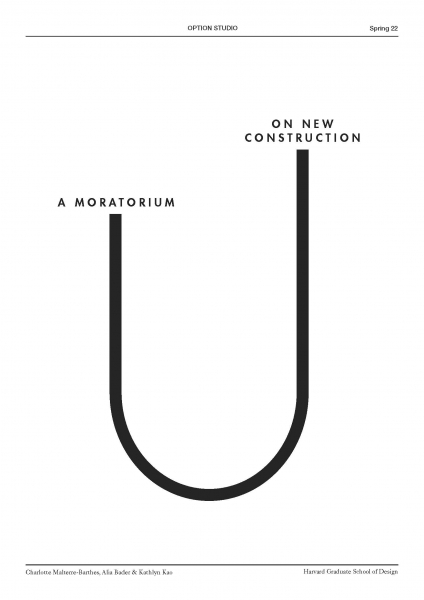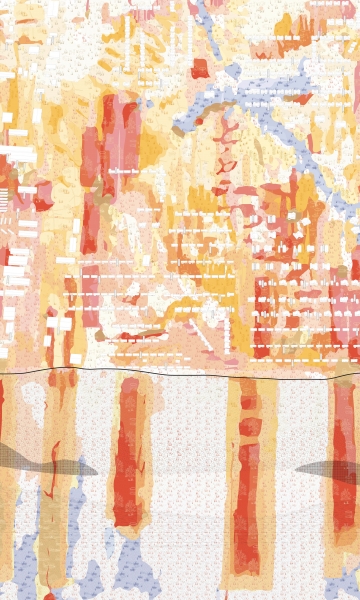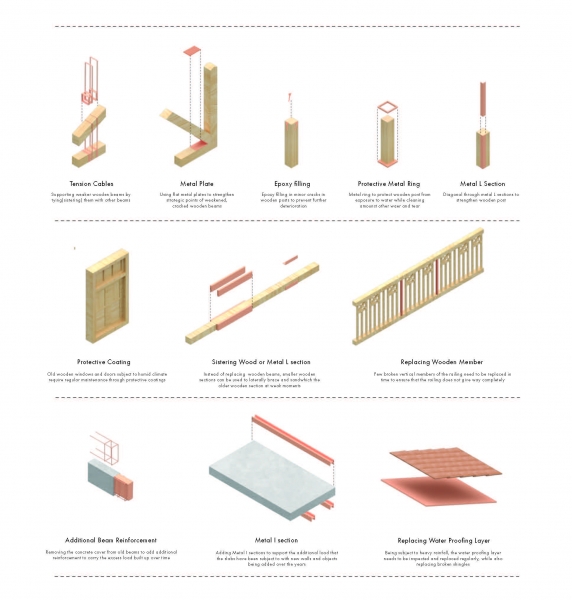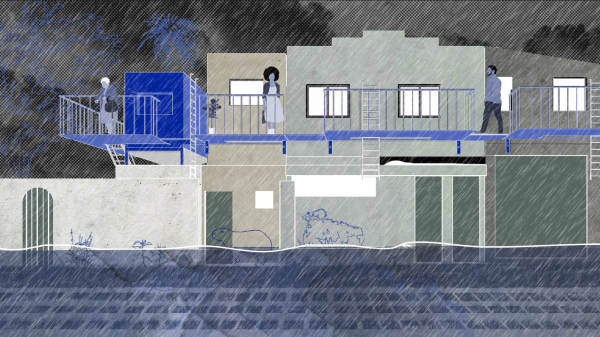Research + Teaching
A Moratorium on New Construction
Harvard GSD, Option Studio, Department of Urban Planning and Design, 2022
Course Number STU-1506
“We need to stop constructing in order to start building.”
— Menna Agha
Back in March 2020, everything stopped. Or so it seemed. Worldwide, construction sites largely kept operating. The pause that offered to question our societal model proposed by philosopher Bruno Latour, touting that “if everything is stopped, everything can be questioned, bent, selected, sorted, interrupted for good or accelerated,” did not happen. Critical questions about the building industry's contribution to the ongoing environmental and social crisis remained unaddressed. Responsible for 40% of carbon emissions worldwide, construction and the expansionist enterprise of extraction it fuels goes on unabated. Yet we know construction material’s extractive practices (i.e., building materials and all ancillary facilitation technologies) are physically impacting entire regions: micro-climates, water resources, fauna, and flora, with gendered and racialized populations most affected. Donna Haraway calls “the appropriation of nature as resource for the productions of culture,” and the commodification of the Earth for the expansion of the built environment are mirrored in today’s global neo-colonial modes of extraction capitalism.
Furthermore, global material use is expected to rebound with post-pandemic economic policies and double by 2060— a third of this rise attributable to construction. While decarbonizing the industry is an urgent task, drastic changes to building protocols are necessary. Beyond the provocation around the suspension of new building activity, the studio seeks to articulate a radical thinking framework to work out alternatives: What happens if we stop building anew momentarily?
It is easy to argue against what may be perceived as a polemical call: Who is to say what and where should one construct as housing is a human right? A pause should address complex questions: How to navigate the need for housing versus the destructive practice of construction? How many of the thousands of new units built every year everywhere are accessible to those who need it most—while office and retail space lay vacant? Beyond moral confines and neo-Malthusian indictments, how to discuss sustainability as a contested concept, legacies of degrowth theory, green capitalism, and problematic Co2 reductions policies becoming the stuff of riots? (Peter Marcuse) Moreover, how do design disciplines face their complicit role in environmental degradation, social injustice, and climate crisis and challenge the present modus operandi of global construction?
Starting with investigating existing laws as tools to regulate the built environment, we will explore precedent alternatives to building new—from rent control to reuse, before crafting and redacting our own moratoria specific to self-chosen sites. The studio hopes to then test the moratorium in a series of locations globally beyond the build-more diktat, questioning the standard claim of ‘building right,’ predatorial real-estate, high-tech-heavy solutions, and the archetypical assumption that architects must build anew rather than practicing methods of prolonging structures and redistributive modes of ownership and commoning. A design vision for a material future relying on our current built stock emerges.
Students: Aziz Alshayeb, Liene Asahi Baptista, Bailey Brown, Jonathan Cook, Gerardo Corona, Austin Lu, Bruno Rodriguez Escobedo, Devashree Shah
Spring 2022, Asst. Prof. Harvard Graduate School of Design
Teaching Team: Alia Bader, Kathlyn Kao
This course is related to the research work A Global Moratorium on New Construction.



